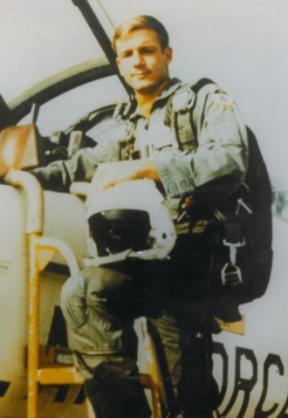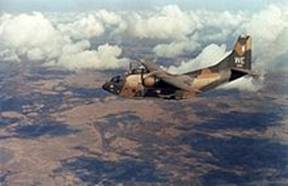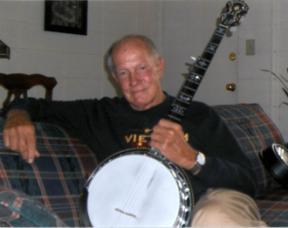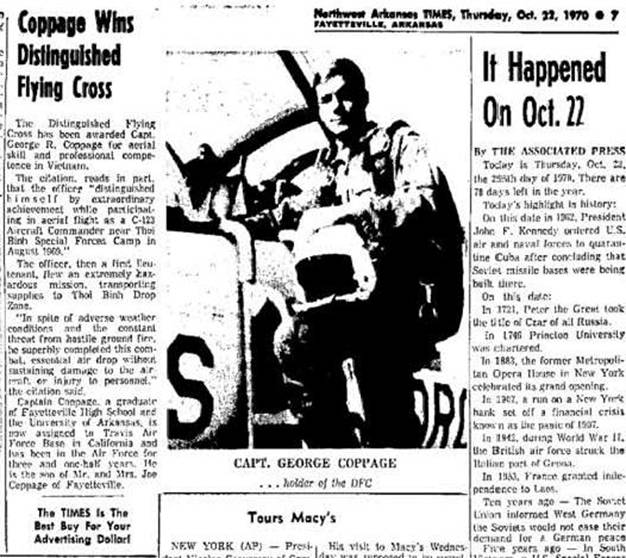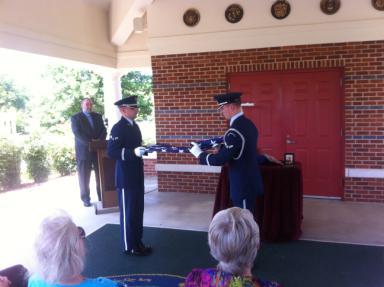| E-Mail Forum | |
|
|
|
| Remembering George Coppage 1944-2012 August 28, 2012 |
|
|
Remembering George Coppage 1944-2012 We were planning to take advantage of the last few dog days of summer to spend some time in the eastern Sierra before the campaign season started full on after Labor Day. But instead, we made a quick decision to divert to Arkansas for the memorial service for one of my oldest friends. I wrote about George couple of times in the E-Forum, once on April 11, 2008 (I'm Not Sure What This Has to Do with Richmond, But There is a Lesson in Here Somewhere, April 11, 2008) and again briefly in April of this year (Old Soldiers....Part 2, Everyman's War, April 25, 2012). After getting out of prison in April and moving to a group home in Little Rock, George died, apparently of natural causes related to a heart condition, on August 10. Following is his obituary: George R. Coppage, age 68 of Little Rock, a long time resident of Fayetteville, died on August 10, 2012. He was born on April 3, 1944, in Gary, Indiana, the son of Joe and Willine Coppage. George was a graduate of Fayetteville High School in 1962, where he starred in football, basketball, and track and was an honor graduate. He was offered both football and track scholarships by the University of Arkansas Razorbacks but decided to attend college as a regular student. He graduated in 1967, earning a Bachelor of Arts with a major in English, also with honors. Later he returned to the U of A and completed a Masters in Education in 1978. He was a member of the Sigma Nu Fraternity while in undergraduate school. After receiving his Masters degree, he taught in public schools in Fort Smith and Huntsville; and from all accounts was a respected and inspiring teacher. He was a talented musician, accomplished on both the banjo and guitar; and he had a marvelous singing voice. He could play and sing all types of music; and his friends said his voice sounded more like Neil Diamond than Neil Diamond. He played and sang professionally for a while; and later in life he built several banjos from scratch. He was also accomplished in furniture refinishing and restoration. He will be remembered as a person with a kind and generous heart and very loyal to his friends and family. He was preceded in death by his parents and one sister, Jan Bonner. He is survived by his sister Jerry and her husband, Gary, from Garfield, Arkansas, nieces, Suzanne Campbell , from Provo, Utah, Kathleen Bonner from Atlanta, Georgia, and Melissa Brown, from Oklahoma City, Oklahoma, and nephews Rodney Brown from Oklahoma City, Oklahoma, and Alan Brown, from St. Louis Park, Minnesota. Cremation arrangements are under the direction of Moore’s Funeral Home, and a memorial service will be held at the National Cemetery in Fayetteville on Tuesday, August 28th, at 2:00 pm. I first remember George showing up for junior high school football practice in the late summer. His family had just moved to Fayetteville from Enid Oklahoma. He was tall and skinny with blond hair much longer than was the custom then, carefully combed and pomaded into a wavy part. This was the 1950’s, and flat tops were the style unless you were a “greaser.” Because of the way he wore his hair, George was at first considered with some suspicion and curiosity by us cooler locals. But that didn’t last long. As the first scrimmage unfolded, George demonstrated an unusual speed and agility, darting in to make tackle after tackle. “What did you say your name was, son?” asked the obviously impressed coach. George also lived in my neighborhood, and we quickly became friends. A kid, David Norwood, who lived across the street from George had a television (still somewhat of a rarity in the 1950s in Fayetteville, Arkansas), and I remember many a Saturday night eating popcorn and watching late night horror movies. I am lucky to have only one tooth not my own, and I owe that to George. He knocked it out with his elbow during junior high school basketball practice. It grew back in for a while, but resulted in a root canal a couple of years later. Eventually that failed, and I had an implant. As we progressed through high school, George continued to excel in everything he did. He starred in football, basketball and track. He was clearly the best three-sport athlete of his era. He was part of the legendary FHS basketball team of 1961-62 that was rated #1 in Arkansas until finally losing at the state championships. Until then, the team had been undefeated in Arkansas. In 1961, George set a new Arkansas state broad jump record of 21 feet 7 ¾ inches. But that’s not all. George was one of only three FHS seniors making the All-State band; he played the trombone. And academically, he was a member of the National Honor Society. George not only played football offense and defense; he stayed on the field at half time to play trombone in the marching band. George was offered athletic scholarships in both football and basketball at the University of Arkansas, but for reasons that I don’t recall, he declined both. He also put aside the trombone and picked up a banjo. At the end of our high school senior year, George and I skipped out on our high school graduation ceremony and headed west for job in the Rockies. I remember we were called in to the principal’s office to explain our flouting of such an important ritual. With great seriousness, Mr. Duncan advised us, “Boys, there are three important times in your life – when you are born, when you graduate from high school and when you die.” Not persuaded, we climbed into George’s 1957 Chevrolet Impala convertible with a cooler of beer in the back seat and headed west with the top down. That was a different era. George’s destination was Grand Teton National Park where he was sort of a one-man fire crew for the National park Service in the Jackson Lake Lodge area. His fire truck was a green pickup with a tank of water on the back and a hose reel. I stayed a few days with George enjoying his comparatively glamorous surroundings before hitchhiking north to a job with the Forest Service on the Montana-Canada border. George and I were in the same fraternity at the University of Arkansas, although we both lived at home for the duration. George continued to excel academically and graduated with an English degree with honors in 1967. Back then, like all land grant universities, Arkansas required all males to take two years of ROTC, with a choice of Army or Air Force. After that, you could voluntarily take another two years of advanced ROTC and end up with a commission as a second lieutenant. Then, there was a two-year service obligation in the Army and a five-year service obligation in the Air Force. There was also a modest stipend that added a bonus for enrolling in advanced ROTC. George and I both started with Air Force ROTC, but I traded the five-year obligation for a two-year obligation and switched to Army. There was about a six-month delay before his call to active duty, and George took a job teaching in Huntsville, a small town about 30 miles east of Fayetteville. After flying, teaching became his second passion. Eventually George reported for duty, taking his initial flight training at Amarillo Air Force Base (now closed). I visited him there once.
George and I found ourselves in Vietnam at the same time in 1969. He was at Phan Rang on the central coast and I was at Long Binh near Saigon. We kept in touch, and got together a couple of times when he had layovers at Bien Hoa Airbase (next to Long Binh) or Tan San Nhut in Saigon.
I recall his “cargo” constantly changed from stop to stop and included personnel, supplies and even bodies. One time a gaggle of locals with goats, pigs and chickens boarded and got off at the next stop. The officer, then a first lieutenant, flew an extremely hazardous mission transporting supplies to Thoi Binh [Special Forces Camp] drop zone. In spite of adverse weather conditions and the constant threat of ground file, he superbly completed his combat-essential air drop without sustaining damage to the aircraft or injury to personnel.
After the Army, I also gravitated to San Francisco, and eventually George and I became roommates along with several other old friends in a house in Mill Valley. It was like old times again. In 1971, I moved to Los Angeles to attend graduate school at UCLA, and Shirley and I got married in November of that year. About that time, George got out of the Air Force and took up selling real estate. The group of roommates in the Mill Valley house broke up when the house burned. It was a two-story down slope house, and the story I recall is that they were all stoned watching football on television on the lower floor when the fire started on the upper floor. They were so out of it that they didn’t even realize the house was on fire until the fire trucks came, and they saved themselves by bailing out of the lower floor windows. At some point, George’s new girlfriend dumped him, and he left the West Coast, taking a job as a counselor and/or teacher at some kind of youth institution in Wilkes Barre, PA. There was some hard drinking going on there, and George was involved in an automobile accident that almost killed him. He married a Wilkes Barre bartender and moved back to Fayetteville where he earned a Masters Degree in Education at the University of Arkansas with a plan to go back to teaching. I believe George then moved back to Fayetteville and landed a teaching job in Ft. Smith, but his drinking got him into trouble, and he lost that job. At some point, he married again, but his wife killed herself. Sometime in the 1980s. George told me that he had been diagnosed with PTSD resulting from his Vietnam service. I didn’t see or hear from George much during those years except to visit him whenever I found myself in Fayetteville. He came to California once and stayed with us or a few days. By the first decade of the 2000s, he seemed to have stabilized. He had some work refinishing furniture and was living with his aging mother in Fayetteville. Because of the DUIs, he had lost his driver’s license permanently. Again, I visited him every time I was in town. The events of 2007 took us all by surprise, and the last time I saw George was maybe five years ago on a closed circuit TV screen at the Washington County Jail before he was sent to a prison in eastern Arkansas. I wrote him sporadically, but not enough, while he was incarcerated and sent him money and books periodically. Earlier this year, George became eligible for parole, and several of his friends, including me, mounted an effort to advocate for his release through letters and phone calls to those who would make that decision. Most helpful was the judge who sentenced him, a Fayetteville native who had known George well. The effort was successful, and George relocated to a group home in Little Rock. Almost miraculously, a sizable veteran’s disability benefit that had been stuck in red tape for years materialized. By George’s account, he was happy to be out, happy to be sober and looking forward to getting on with his life. He was playing the banjo again and even talking about moving back to Fayetteville.
|
|
|
|
